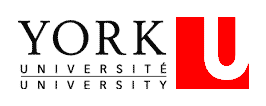Research in our lab is broadly directed towards the elucidation of the fundamental nature of gas-phase ions and their chemical and physical interactions with molecules in the gas phase with an eye to possible applications in analytical mass spectrometry and other related areas. The approach is largely experimental, relying primarily on a powerful and versatile Selected-Ion Flow Tube (SIFT) tandem mass spectrometer: a tandem quadrupole mass spectrometer in which the two quadrupoles are separated by a helium flow reactor operating at ca. 0.35 Torr. The SIFT can be fitted to an Inductively-Coupled Plasma (ICP), an almost universal source for atomic metal cations, or an electrospray ionization (ESI) source that allows the injection of measurable amounts of singly and multiply charged positive and negative ions generated in solution (e.g. multiply protonated proteins and peptides). Also, the single quadrupole detector of the SIFT has been replaced with a triple quadrupole (QqQ) mass spectrometer and this has provided increased mass range (up to m/z 2000), increased sensitivity, and a means to perform low-pressure CID experiments for ion bond-energy and ion-structure determinations (a vast improvement over our previous multi-collision CID operation). Exploratory studies of electrospray ion production and dissociation are performed with two commercial ESI/QqQ instruments. Both the ICP/SIFT/QqQ and the ESI/SIFT/QqQ facilities can provide specific reaction rates and product distributions for selected ion/molecule reactions from kinetic measurements, as well as energetic and structural information on individual ions from collision-induced dissociation (CID) experiments.
Current areas of interest and application include the following:
- Metal-ion Chemistry: These studies are directed to the determination of periodic trends in chemical reactivity of bare metal ions and their oxides as well as the influence of organic, carbonaceous and biomolecular ligands on this reactivity.
- Chemical Resolution: An applied goal in the bare-metal ion studies is the identification of chemical reactions that may be used to avoid isobaric interferences in ICP-mass spectrometers fitted with a collision cell. This research brings metal-ion/molecule chemistry firmly into commercial mass spectrometry. An ongoing effort is the creation of an on-line database of rate coefficients measured in our laboratory for reactions involving atomic ions.
- Ion Catalysis: An ongoing project involves experimental and theoretical studies of the role of atomic and molecular ions in the catalytic conversion of neutral reagents in the gas phase. For example, we try to elucidate the role of atomic metal cations and metal-oxide cations in the catalytic oxidation of atmospheric and organic molecules, including the conversion of methane to methanol. Studies of the influence of carbonaceous surfaces such as flat PAHs, the curved corannulene molecule and the (edgeless) C60 molecule are directed to an understanding of the manner of coordination of metals to differently curved carbon networks and possible catalytic effects of these surfaces on metal-ion reactivity at the molecular level.
- Biometallic Ions: Studies of bio-metallic ion reactivity are directed to the elucidation of the nature and strength of the coordination of metal ions to biological molecules (e.g. oligonucleotides) and to the measurement of the chemical reactivities and potential for catalysis of biometallic species. We try to mimic in vivo metal-biomolecule bond connectivities and to measure their intrinsic reactivities.
- Ion Scrubbing: We have begun to elucidate the use of selected molecules for removing background ions from analyte spectra. The general objective is to find ways to increase the signal/noise ratio by chemically eliminating undesirable background ions. The challenge is to find a near-universal reagent for eliminating background ions, while leaving analyte ions unaffected. Common sources for background ions include sodiated or ammonium-ligated analyte ions, solvent ions (ACN, R-OH, R-COOH, etc.) and ions formed from phthalates, adipates, silicones and plasticizer additives.
- Fullerene-Ion Chemistry: We continue to explore the ion chemistry of fullerenes. Current studies emphasize the chemistry of metal ion with fullerenes.
- Ion Synthesis: We have a general interest in a wide range of fundamental kinetic, thermodynamic and mechanistic aspects of ion/molecule reactions and how these relate to ionic and molecular growth in partially ionized environments such as planetary atmospheres and interstellar clouds. A current focus is the possible role of ions in the gas-phase synthesis of amino acids.
- Analytical Chemistry of Semiconductor Molecules: A modest collaborative program is in place with Dr. Vladimir Baranov (U Toronto) using ICP/MS and ion mobility/reactivity measurements directed to the assessment of the elemental and isomeric purity of organic molecules important as semiconductors in molecular electronics devices.
Our Ion-Molecule Chemistry Laboratory is a key constituent of the Centre for Research in Mass Spectrometry located at York University.
Biological function of metal cations.
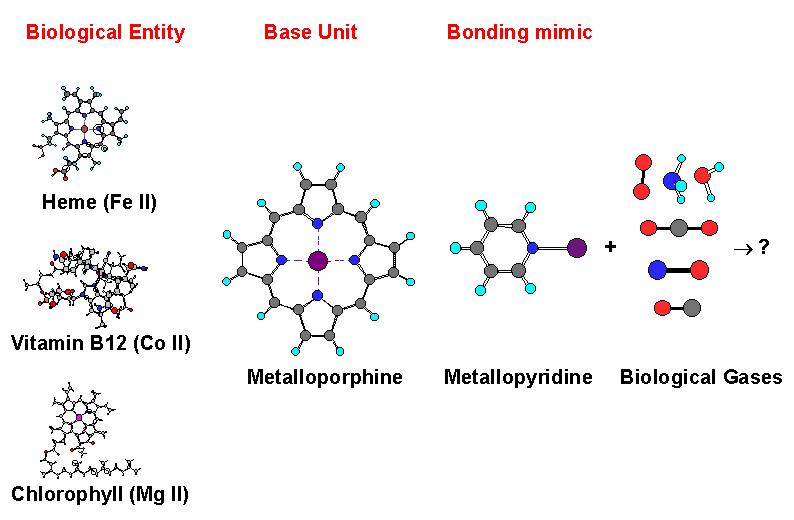
Gas Phase Ion-Molecule Catalysis
Degradation of CO, NO2, NO and N2O toN2 and CO2 via cationic metal/oxidecycles
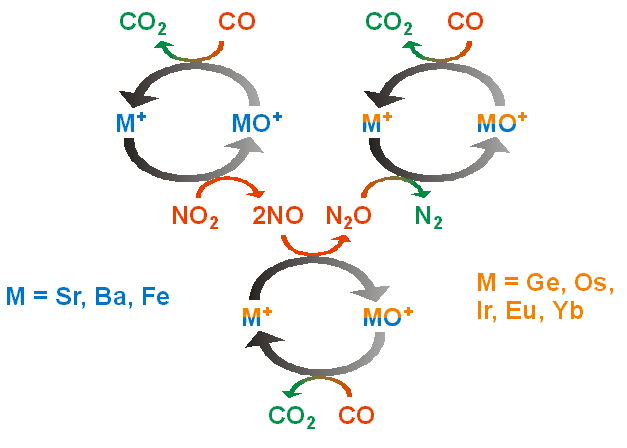
"Chemical Resolution" in ICP/MS analysis
A Joint research project between York University and MDS/SCIEX to build a database of ion moleculereaction rate coefficients of interest to the plasma massspectrometry community. The two instruments involved in theproject are shown below: the Elan 6100 DRC (top) andICP/SIFT (bottom).
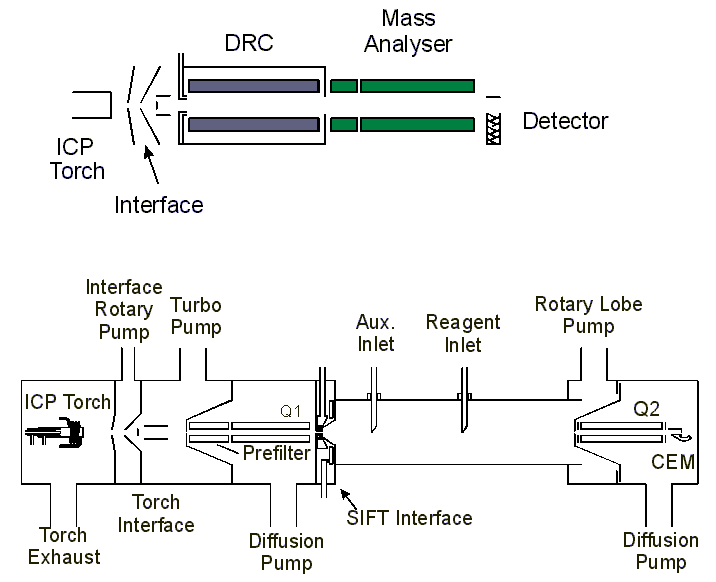
Interstellar and Circumstellar Ion-Molecule Chemistry
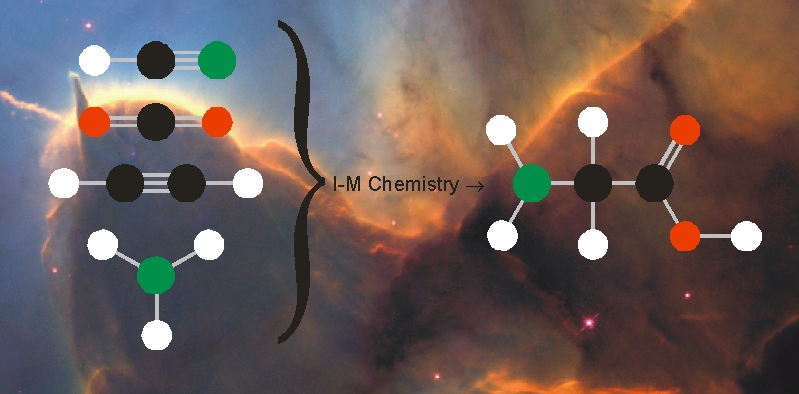
 |
